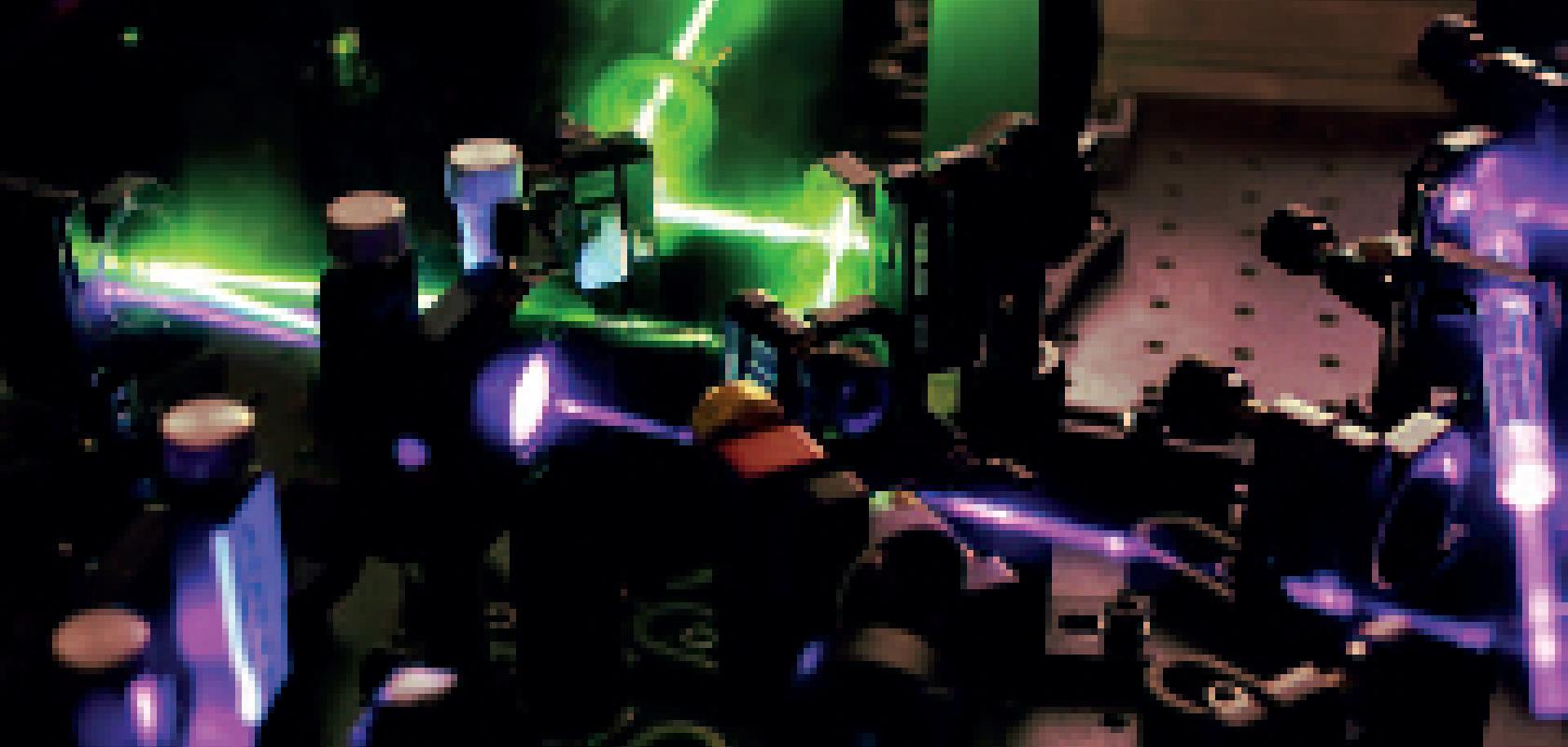Researchers working with perovskite, a material showing great promise for photovoltaics, have shown that the material can also be used to produce cheap lasers.
The scientists from Professor Sir Richard Friend’s group at Cambridge’s Cavendish Laboratory, working with Professor Henry Snaith’s University of Oxford group, sandwiched a thin layer of lead halide perovskite between two mirrors to produce an optically driven laser. The material showed very efficient luminescence, with up to 70 per cent of absorbed light re-emitted.
Speaking to Electro Optics, Dr Felix Deschler of Cambridge’s Cavendish Laboratory and one of the lead authors of the paper, commented that the group wasn’t looking to make a perovskite laser initially; the light-emitting potential of the material came about from fundamental research. ‘You can use the photoluminescent properties of the material to make LEDs and therefore potentially you could make an electrically pumped laser out of it,’ he said.
The new findings, recently published online in the Journal of Physical Chemistry Letters, raise expectations for even higher solar cell efficiencies, say the Oxbridge team, as well as potential uses for perovskites in making cheap lasers for telecommunications, for instance.
Perovskites are a class of minerals with the same crystal structure as calcium titanium oxide. They have been the subject of intense research in the photovoltaics community ever since researchers made solid perovskite solar cells, which, in just two years of research, have reached 17 per cent efficiency, a level that took decades to reach with silicon. Perovskite solar cells are now being scaled up for commercial deployment, notably by the Oxford University spin-out, Oxford PV.
Essentially, if a material is good at converting light to electricity, then it will be good at converting electricity to light. The researchers found that upon light absorption in the perovskite, two charges, electron and hole, are formed within one picosecond, but then take anywhere up to a few microseconds to recombine. This is long enough for chemical defects to have stopped the light emission in most other semiconductors, such as silicon or gallium arsenide. ‘These long carrier lifetimes, together with exceptionally high luminescence, are unprecedented in such simply prepared inorganic semiconductors,’ Dr Sam Stranks, co-author from the Oxford University team, said in a statement.
The other advantage with the material is that it can be prepared easily as thin films using cheap scalable solution processing. Most commercial solar cell materials need expensive processing to achieve a very low level of impurities before they show good luminescence and performance. The purity of perovskites is very good, noted Deschler, which makes them such a good material for photovoltaics.
‘It’s [perovskite] really easy to fabricate,’ he said. ‘You can spin coat it from solution, which makes it interesting economically.’ However, he commented, further purification might be necessary to produce an efficient laser from the material. The laser cavity would also need to be optimised and there are other engineering aspects that would have to be investigated to produce a perovskite laser.
There are other advantages with perovskites, Deschler said, including the potential to fabricate flexible light sources from the material.
Michael Price, co-author from the group in Cambridge, described the semiconductor properties of the specific class of perovskite minerals the team were working with: ‘Its high luminescence efficiency means that the heat losses inside the solar cell are small and therefore the theoretical efficiency of this material is high, comparable or potentially higher than silicon.’ This has great implications for improvements in solar cell efficiency.
The high luminescent behaviour of the material is an excellent test for solar cell performance – poorer luminescence, as in amorphous silicon solar cells, reduces both the quantum efficiency and also the cell voltage.
The light source produced by the team emits at 780nm, although it is chemically tuneable to other wavelengths, according to Price. The team is now trying to make a green laser, commented Deschler, as well as ‘the magic 1,000nm, which is the telecoms wavelength’, he said. ‘There is much more to learn about how these materials work,’ Felix concluded, adding that more fundamental research is needed to realise the potential of the material.
About the author
 Greg Blackman is the editor for Electro Optics, Imaging & Machine Vision Europe and Laser Systems Europe.
Greg Blackman is the editor for Electro Optics, Imaging & Machine Vision Europe and Laser Systems Europe.
You can contact him at greg.blackman@europascience.com or on +44 (0) 1223 275 472.
Find us on Twitter at @ElectroOptics, @IMVEurope, and @LaserSystemsMag.


